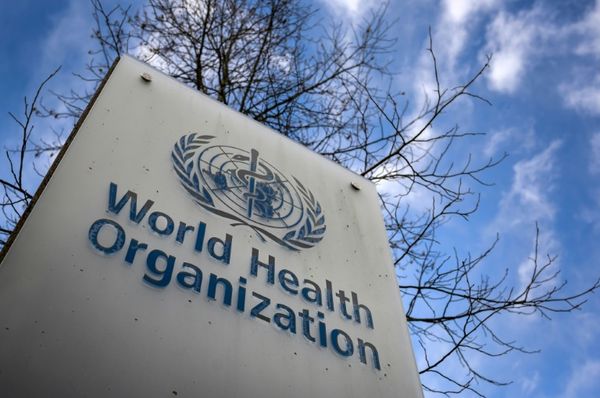The polio vaccination programme has successfully reduced the prevalence of polio cases by 99.9% worldwide since it was launched in 1988. This journey has faced its fair share of challenges, and it seems that the last mile to realising the dream of a polio-free world is going to be equally challenging.
The U.S., the U.K., and Israel, among others, recently reported polio cases in unvaccinated people after having been polio-free for more than a decade. They have also reported a silent and widespread transmission of polioviruses, going by wastewater surveillance.
The oral polio vaccine
Polioviruses are enteroviruses that are transmitted primarily by the faecal-oral route. So their silent outbreaks in countries with excellent water, sanitation, and hygiene infrastructure has raised eyebrows, adding a new dimension to the Global Polio Eradication Initiative (GPEI).
To understand the possible reasons for this scenario, we need to understand the different types of performant polio vaccines that are available. One is the oral polio vaccine (OPV), a live attenuated vaccine, meaning it contains weakened polioviruses (all three types – 1, 2, and 3) to induce an immune response in a human body without causing disease.
In addition to being inexpensive and easy to administer, the big advantage of the OPV is that it triggers a robust immune response in the gut lining (called the mucosal immune response). This response is like a strong guard at the main gate – the virus’s point of entry – and is excellent at preventing disease as well as person-to-person transmission of the virus. The mucosal immune response is also in addition to the significant immune response in the blood (the systemic immune response).
The OPV is also easier to manufacture as the “seed virus” required for the vaccine is an attenuated (weakened form) virus; researchers don’t need to handle the wild virus at any stage.
Drawbacks of the OV
The OPV also has some drawbacks. One, its ‘uptake’ by the immune system after being administered is not as good as is desirable, especially in developing countries like India. The response to this is to administer multiple doses over time.
A more dreaded drawback is that the OPV can reverse the virus’s neurovirulence in rare cases, leading to vaccine-associated paralytic poliomyelitis (VAPP). When the virus’s ability to jump from one person to another is also restored, the result can be vaccine-derived paralytic poliomyelitis (VDPV).
The cases reported in the U.S., the U.K. and Israel last year were all VDPVs.
The inactivated polio vaccine
So a question arises: Is the OPV solely responsible for these cases? Before answering this, let’s address the inactivated polio vaccine (IPV). It contains inactivated polioviruses (all three types) and is administered by injection. It induces a strong systemic immune response, thus protecting against paralytic poliomyelitis, without any risk of causing VAPP or VDPV.
Its downside is that it hardly elicits mucosal immunity, especially in the human intestine, and is thus unable to prevent silent infections and transmission. (This is just like the crop of COVID-19 vaccines that could prevent severe disease and deaths weren’t as good at preventing infection and transmission). So in the event of an outbreak, only the OPV is used, not the IPV: the OPV can be administered rapidly to a large population and can help prevent transmission.
Moreover, manufacturing the IPV requires experts to handle wild viruses, which are chemically inactivated. So it requires a high level of biosafety measures, such as those found in biosafety level-3 (i.e. BSL-3) facilities, which there are very few of around the world. As a result, IPV production is not allowed in countries lacking these facilities; in turn, most economically developing countries are unable to produce it locally, and are forced to import it from richer countries. The eventual effect is limited production and higher landing cost of the vaccine.
The ‘global switch’
Administrators, researchers, and policymakers have been making efforts for a long time now to tackle the disadvantages of both vaccines and eradicate the virus. Since 90% of VAPP and VDPV cases have been due to poliovirus type 2, and this virus was otherwise eradicated worldwide in 1999, it was decided that OPV type-2 be discontinued. Since April 2016, the OPV has had attenuated versions of types 1 and 3 of the virus.
This “global switch” was accompanied by the introduction of the IPV in countries that still depended on the OPV in their national immunisation programmes.
As it happens, the number of VDPV cases didn’t come down after April 2016, ; in fact, it increased. The global switch had failed – due to multiple factors: limited supply/availability of the IPV, cost/logistics, and a sudden increase in the demand for IPV after the switch. In addition, because the new OPV lacked the type-2 poliovirus, the population immunity against type-2 virus dropped, giving the virus a new lease of life. The result? The previously extant type-2 VDPV began to circulate.
The U.S., the U.K., and Israel haven’t used the OPV for decades now and, as a result, the people there lacked significant intestinal mucosal immunity to prevent transmission, leading to “silent outbreaks” of VDPV. The interruption in routine immunisation services during the COVID-19 pandemic also played a part in increasing the fraction of unvaccinated and/or under-vaccinated individuals.
Advantage OPV
For all these reasons, we should not be hasty about withdrawing the OPV and continue with only the IPV at this point in time. It would be dangerous, even unethical, to deprive a section of the population the protection against the shedding of polioviruses that only the OPV can provide, causing these people to participate in disseminating the virus. A child vaccinated with only the IPV will resist the virus’s ability to cause a paralytic disease, but will still be at risk of being infected and, thereafter, contributing to silent transmission of both vaccine-derived and wild polioviruses.
Since the transmission of wild poliovirus is rampant in our neighbouring countries (mainly Pakistan) and if the virus becomes ‘imported’ into India, individuals primed solely by the IPV could facilitate widespread transmission, leading potentially to paralytic disease in poorly vaccinated individuals in some corner of the country. This is the precise reason why Indian programme managers and the GPEI have persisted with pulse polio rounds in India.
New alternatives in development
This said, efforts are on to develop better polio vaccines to tackle the disadvantages of both the OPV and the IPV. For example, a novel OPV (nOPV) has recently been developed and used in African countries. It is manufactured using attenuated polioviruses in which certain mutations have been introduced using genetic engineering, making it five-times harder for the virus to regain its neurovirulence.
While it is true that a few VDPV cases have been reported even after administering the nOPV, even as the situation is under intense scrutiny by the scientific community, this novel vaccine may have prevented a greater number of VDPV cases – case that might have arisen had we persisted with the old version of the vaccine. The fact remains that the nOPV is safer than the conventional OPV.
Similarly, in order to make the IPV-manufacturing safer, researchers are trying to use attenuated viruses instead of wild viruses. The resulting IPV is called a “Sabin IPV” and is currently undergoing clinical trials in Japan and China. Experts are also testing specific adjuvants that can be added to the IPV to induce a mucosal immune response.
The OPV, along with the smallpox vaccine, is a champion that has succeeded in bringing the world to the brink of eradication of a dreaded disease. Until we find an effective solution, it would be inadvisable to skip the OPV, or we risk jeopardising global efforts at this crucial juncture.
Vipin M. Vashishtha is past convener, IAP Polio Eradication Committee. Puneet Kumar is a clinician in New Delhi.







